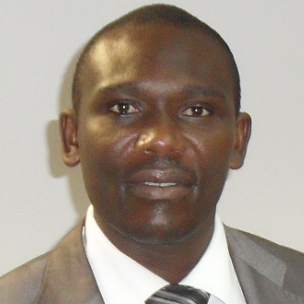International Journal of Intelligent Systems and Applications (IJISA)
IJISA Vol. 4, No. 9, 8 Aug. 2012
Cover page and Table of Contents: PDF (size: 486KB)
Fuzzy-Based System for Determining the Severity Level of Knee Osteoarthritis
Full Text (PDF, 486KB), PP.46-53
Views: 0 Downloads: 0
Author(s)
Index Terms
Fuzzy-System, Knee, Osteoarthritis, Severity Level
Abstract
The task of medical diagnosis, unlike other diagnostic processes is more complex because a lot of vagueness, linguistic uncertainty, subjectivity, measurement imprecision, natural diversity are all prominently present in medical diagnosis. Osteoarthritis (OA) of the knee is a major public health issue causing chronic disability and reduction in quality of life; it is reported to be associated with a significant decline in function and causes a higher rate of disability than any other chronic condition. Osteoarthritis (OA) exacts a cost in terms of pain, limited mobility, and decreased function among a wide range of individuals. With improvement in science and technology, intelligent computing has been used to assist in enhancing qualitative services.
This paper reports the development of a fuzzy-based system to determine the level of severity of knee osteoarthritis, given some input conditions. The system was implemented and simulated using MATLAB Fuzzy Logic Toolbox. The results are entrusting and promising based on the flexibility and case of adaptability.
Cite This Paper
Emuoyibofarhe O. Justice, Taiwo K.F, "Fuzzy-Based System for Determining the Severity Level of Knee Osteoarthritis", International Journal of Intelligent Systems and Applications(IJISA), vol.4, no.9, pp.46-53, 2012. DOI:10.5815/ijisa.2012.09.06
Reference
[1]Zadeh, L. A. Making computers think like people,” IEEE. Spectrum, 8/1984, pp. 26-32.
[2]R. Radha , S. P. Rajagopalan “Fuzzy logic approach for diagnosis of Diabetics”. Information Technology Journal 2007, 6(1): 96-102
[3]Oguzhan Yilmaz, Gunseli Gorur and Turkay, Dereli.; Computer Aided Selection of Cutting Parameters by using Fuzzy Logic: B. Reusch (Ed.): Fuzzy Days 2001; LNCS 2206; pp.854- 870, 2001
[4]Buchanan, B. and Shortliffe, E. (Eds.) (1984). “Rule-Based Expert Systems”: The MYCIN Experiments of the Stanford Heuristic Programming Project. Addison-Wesley, Reading, MA.
[5]Dunlop D., L. M. Manheim, E. H. Yelin, J. Song and R. W. Chang. “The cost of arthritis” in Arthritis and Rheumatism, 2003, pp. 101-113
[6]Urwin, M., Symmons, D. P. M., Allison, T., Brammah, T., Busby, H., Roxby, M., Simmons A. and Williams G. “Estimating the burden of musculoskeletal disorders in the community: the comparative prevalence of symptoms at different anatomical sites and the relation to social deprivation” in Annals of Rheumatic Diseases, 1998, pp.649-655.
[7]Oka, H. Muraki,S., Akune, T., Mabuchi, A., T. Suzuki, H. Yoshida, S. Yamamoto, K. Nakamura, N Yoshimura, H, Kawaguchi : “Fully automatic quantification of knee osteoarthritis severity on plain radiographs” Osteoarthritis and Cartilage, 2008, 16(11): 1300-1306
[8]Bajeh, O. A. and Emuoyibofarhe O. J (2008) “A fuzzy logic temperature controller for preterm neonate incubator” Proceedings of the first International Conference on Mobile Computing Wireless Communication, E-health, M-health and Telemedicine (MWEMTem) 2008, vol. 1, pp. 158-170
[9]Leitich, H., Adlassnig, K. P. and Kolarz, G., Development and Evaluation of Fuzzy Criteria for the Diagnosis of Rheumatoid Arthritis, Methods of Information in Medicine 35:334– 342, 1996.
[10]Ohayon, M., Improving decision making processes with the fuzzy logic approach in the epidemiology of sleep disorders. J. Psychosom. Res. 1999; 47, 297–311
[11]Warren, J. G. Beliakov and B. Van der Zwaag, Proc. 33rd Hawaii International Conference on System Sciences, IEEE, 2000, pp. 1578.
[12]Chuen Chien Lee, “Fuzzy Logic Control Systems: Fuzzy Logic Controller – Part I” IEEE Transactions On Systems, Man And Cybernetics. 1990, Vol. 20. No. 2 pp. 404 – 418
[13]Olufade, F. W. Onifade, Bolanle, F. Oladejo and Tosin, J. Oyedeji Dynamic Bus Rapid Transit (BRT) Resource Management Modelling Using Fuzzy Logic Paradigm. Proceedings of Informing Science and IT Education Conference (InSITE) 2010.

